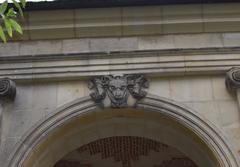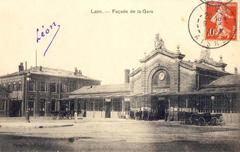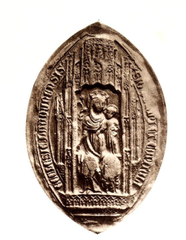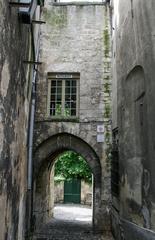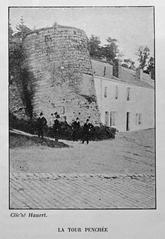Visiting Poma 2000 in Laon, France: A Comprehensive Guide to Tickets, Hours, and Tips
Date: 04/07/2025
Introduction
Perched atop a dramatic limestone hill, the medieval city of Laon in northern France showcases a unique urban landscape where centuries-old architecture towers above the modern lower town and surrounding plains. For decades, this steep elevation posed a significant challenge for residents and visitors seeking to traverse between Laon’s “ville haute” (upper town) and “ville basse” (lower town). In response, the city introduced the Poma 2000 in 1989—an innovative, fully automated, cable-driven urban transit system that bridged the nearly 100-meter vertical divide. Although the Poma 2000 ceased operations in 2016, its legacy endures as a remarkable feat of engineering and a symbol of Laon’s forward-thinking spirit. This guide delves into the Poma 2000’s history, significance, closure, preservation movement, and practical visitor information for exploring its legacy and the city’s other attractions (Rail Passion, INA, Laon Tourism Official Website).
Table of Contents
- The Urban Mobility Challenge in Laon
- The Poma 2000: Concept, Construction, and Technology
- Operational Years and Urban Impact
- Closure and Decline
- Preservation Efforts and Monument Historique Status
- Visiting the Poma 2000 Site Today
- Accessibility and Travel Tips
- Nearby Attractions in Laon
- Frequently Asked Questions (FAQ)
- Summary and Visitor Recommendations
- Sources and Further Reading
The Urban Mobility Challenge in Laon
Laon’s historic upper city, set atop a high plateau, has always been geographically distinct from its lower urban quarters. As early as the late 19th century, the city experimented with solutions to connect the two, starting with a Decauville railway in 1888, soon replaced by the Chemin de fer de Laon—a rack railway running from the SNCF station to the Hôtel de Ville. This tramway, vital for city life, was eventually closed in 1971 as operational and financial difficulties mounted (Rail Passion).
The loss of this link left a pronounced gap in Laon’s urban mobility, especially for those unable to use private vehicles. The city sought a modern solution that would address the steep climb and the need for efficient, accessible transit.
The Poma 2000: Concept, Construction, and Technology
By the late 1970s, city planners and the French Ministry of Transport envisioned a cutting-edge, driverless cable transport system. The resulting Poma 2000 project, awarded to Pomagalski (POMA)—a renowned specialist in cable-driven systems—was conceived as a hybrid between funicular and metro, with a focus on automation and reliability (INA).
Key Features:
- Route: 1.5 kilometers with a 100-meter vertical rise, connecting Gare (railway station), Faubourg de Vaux (mid-station), and Hôtel de Ville (upper town).
- Vehicles: 3-4 automated “œuf” (egg-shaped) cabins, each carrying up to 33 passengers.
- Operation: Fully automated and driverless, with cabins departing every 2.5 minutes at peak times.
- Speed: Up to 36 km/h, reducing travel time across the hillside to just over three minutes.
- Safety: Advanced cabling and braking systems ensured passenger security even during power failures.
The Poma 2000 was one of the world’s earliest driverless urban transit systems, a prototype that blended the reliability of cableways with the frequency and convenience of a metro (INA).
Operational Years and Urban Impact
Inaugurated on February 4, 1989, the Poma 2000 quickly became integral to Laon’s daily life. It enabled:
- Rapid connection between the railway station and the upper town’s heart.
- Partial pedestrianization of the medieval center by reducing car traffic.
- Tourism development, as the system itself became a curiosity and drew transport enthusiasts.
At its peak, the Poma 2000 carried up to 500,000 passengers annually. However, as a one-of-a-kind system, it was expensive to maintain, with fare revenues covering only a fraction of operating costs. Custom parts and specialized upkeep made its long-term sustainability increasingly challenging (INA).
Closure and Decline
Why Did the Poma 2000 Close?
By the 2010s, several factors converged:
- Declining ridership, due to changes in population and mobility habits.
- Mounting maintenance costs for aging, bespoke infrastructure.
- Municipal budget constraints and the lure of more flexible, affordable bus services.
After careful consideration, the city discontinued the Poma 2000 in August 2016, replacing it with buses. The closure was met with disappointment but also galvanized public interest in preserving this unique piece of engineering (Rail Passion).
Preservation Efforts and Monument Historique Status
Advocacy and Heritage Protection
Following closure, the association “Agir pour le Poma” mobilized to save the system from demolition. Their efforts included:
- Public awareness campaigns and signature collections.
- Advocacy for recognition of the Poma 2000’s technological and historical value.
- Application to DRAC for Monument Historique status, which would safeguard the infrastructure and enable future restoration (France 3 Régions).
Current Status and Initiatives
While a definitive heritage designation is pending, the Poma 2000’s infrastructure remains intact, and preservationists continue to offer guided tours, educational events, and proposals for creating a transport museum or heritage walk along the former route.
Visiting the Poma 2000 Site Today
What Can Visitors See?
- Former Stations: The stations at Gare, Faubourg de Vaux, and Hôtel de Ville remain standing and can be viewed externally.
- Heritage Tours: Occasional guided tours are provided by “Agir pour le Poma” and local tourism offices, offering insights into the system’s history and technology.
- Interpretive Panels: Some areas feature informational signage on the Poma 2000 and Laon’s transport history.
Tickets and Hours
- No Regular Service: The Poma 2000 is not operational; there are no standard tickets or operating hours.
- Special Tours: Tickets for guided tours must be booked in advance through the association or local tourism offices. Check their websites for up-to-date schedules.
Accessibility and Travel Tips
- Getting There: Laon’s SNCF railway station is adjacent to the former lower Poma 2000 station. From there, the upper town and former Hôtel de Ville station are accessible on foot (steep walk or shuttle).
- Mobility: The city’s steep terrain can be challenging. Some areas have ramps and elevators; inquire at the tourist office about accessible routes and accommodations.
- Best Time to Visit: Spring and summer offer pleasant weather for walking tours and exploring Laon’s historic sites.
Nearby Attractions in Laon
- Laon Cathedral: A masterpiece of early Gothic architecture, offering panoramic views of the city.
- Medieval City Walls: Walk along the ramparts and enjoy vistas of the countryside.
- Musée d’Art et d’Archéologie: Learn about Laon’s cultural and urban history.
- Historic Upper Town: Discover cobbled streets, charming squares, and local cafés.
Frequently Asked Questions (FAQ)
Q: Is the Poma 2000 operational today?
A: No, it has been closed since 2016.
Q: Can I visit the former Poma 2000 stations?
A: Yes, the exteriors are accessible, and guided tours are occasionally available—book in advance.
Q: Are there accessibility accommodations?
A: Parts of Laon have been adapted, but the hilly terrain may be challenging. Check with the tourist office for accessible routes.
Q: How do I book a heritage tour?
A: Through “Agir pour le Poma” or the Laon Tourism Official Website.
Q: What is Monument Historique status?
A: It is a French heritage classification that protects significant sites from demolition or alteration.
Summary and Visitor Recommendations
The Poma 2000 stands as a remarkable chapter in Laon’s urban and transport history—a bold experiment in automated cable-driven transit that sought to bridge the city’s medieval past with modern mobility solutions. Despite its closure in 2016 due to financial and operational challenges, the Poma 2000 remains a symbol of innovation and civic pride. Preservation efforts by local associations underscore its cultural and technological significance, with plans for heritage tours and museum initiatives in progress. Visitors to Laon can explore the former stations, join educational tours, and experience the city’s other architectural marvels. For up-to-date information on tours, accessibility, and events, consult official tourism resources and preservation groups. The Poma 2000’s story illustrates the rich intersection of technology, culture, and community in shaping city life (INA, Rail Passion, France 3 Régions).
Sources and Further Reading
- Rail Passion Article on Poma 2000
- INA Archive on Poma 2000
- Laon Tourism Official Website
- Tourisme Pays de Laon
- France 3 Régions Coverage on Poma 2000
Suggested Visuals:
- Photographs of Poma 2000 stations and “œuf” cabins (alt text: “Poma 2000 cable-driven urban transit cabins in Laon”)
- Panoramic views of Laon’s upper and lower towns (alt text: “Panoramic view of Laon’s ville haute and ville basse”)
- Historical images of the original tramway and Poma 2000 system
